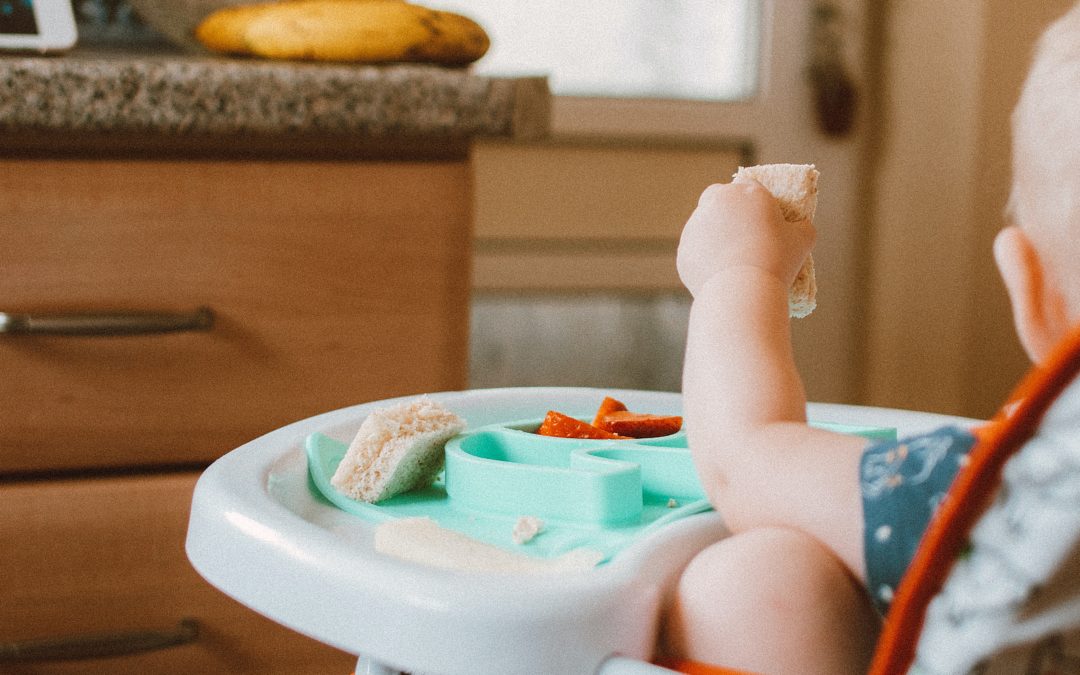March 2020 saw the start of lockdown and with that, there also became a baby boom. I thought I’d put together a blog post full of tips for when it comes to weaning your baby.
By six months old, your little cutie is needing more than just the boob or the bottle and it is around this time that solid foods should start to be introduced alongside their milk.
When you start the weaning process, it teaches them how to move solid food around their mouth, chew and swallow solid foods.
The age old question is “Why wait until my baby is around 6 months?”
Well according to the experts they say that breastmilk and formula gives the energy and nutrients needed until around 6 months.
It also makes sure that your little one is more able to feed themselves and will be better at moving food around their mouth.
But how do you know they’re ready to be weaned?
Roughly around 6 months, your baby might be:
• Chewing fists
• Wanting extra milk feeds
• Waking up in the night
These are normal baby behaviours but are actually common misconceptions when working out if your baby is ready to be weaned.
The following are the actual signs you need to be keeping an eye out for when it comes to knowing when your baby is ready to start the weaning process.
- stay in a sitting position whilst keeping their head upright unaided.
- Co-ordinate their hands and mouth so they can pick up food or drink and put it into their mouth.
- Rather than spitting food out they will swallow it instead.
There are two types of methods for weaning; Spoon fed or Baby Led, Spoon fed is starting off with puréed or mashed foods which then leads onto finger foods, but with Baby-led weaning it means offering your baby only finger foods and letting them feed themselves from the start.
Whether you choose to spoon feed or use the baby led method of weaning, the advice overall remains the same, just ensure your baby gets to eat a wide variety of food and gets all their nutrients.
So, what do you need when you’re ready to start weaning?
• High chair
• Bibs
• Baby Cups – these help with the transition to cups rather than bottles
• Spoons – usually made of rubber or plastic will be easier on your baby’s gums
• Plastic bowls – they’re likely to end up on the floor so at least they wont break!
• Ice cube trays –super useful for batch cooking and freezing baby sized portions
What types of food
There are five food groups that you should be giving to your baby when starting their weaning journey. These are:
- Vegetables
- Fruit
- Starchy foods
– foods that contain gluten, including wheat, barley and rye - Protein foods
– nuts and peanuts (crushed or ground)
– seeds (crushed or ground)
– shellfish (don’t serve raw or lightly cooked)
– fish - Dairy
– cows’ milk (only in cooking or mixed with food)
– eggs (should not be eaten raw or lightly cooked)
To start with, your baby only needs a small amount of solid food, once a day. Once food has been introduced gradually increase the amount and variety of the food groups, this can help prevent them becoming fussy eaters as they grow up.
Start with a single vegetable or fruit to give them a new flavour to try. You might also want try baby rice mixed with your baby’s usual milk. I found you have such a small window to allow them to experience and taste new and exciting flavours. Toby had such a quirky sense of taste. He loved chutneys, gherkins and things you wouldn’t normally think little ones would enjoy. To this day he still loves chutney and Boursin on crackers!
Remember, babies don’t need salt or sugar added to their food as it isn’t good for their kidneys and sugar can cause tooth decay.
When supervised, around 6 to 7 months, try moving onto mashed and finger foods as soon as they’re ready. This helps them learn how to chew, move solid food around their mouth and swallow solid foods.
Give your baby a spoon and let them try feeding themselves. Also give them some finger food to help them get used to different textures, picking bits of food up and feeding themselves – this is also good for developing their hand-eye co-ordination.
How much ?
In terms of how much you should be giving your baby, it really depends on their appetite, Chloe was such a chunky monkey and off the percentile chart we started weaning early around 4.5 months. Let your baby guide you on how much food they need!
We started as I thought you were supposed to with some purees. This lasted about 1 week. We then discovered baby led weaning and didn’t look back! It was such a fun experience albeit messy. I just loved the fact that she could eat what we had, just in strips or easy to handle pieces. Plus she absolutely demolished all food put in front of her!
Never force your baby to eat, treat it just like you do when you follow your babies cue for milk. Be responsive when giving solid foods and learn to recognise when they’re hungry and when they’re full. There will be days when they eat more, others when they eat less. Adults are the same too!
There will also be some harder days when they reject everything – even their favourites! This is perfectly normal. Just be patient and keep offering a variety of foods… they’ll get used to it in their own time.
For more information and advice click here to read more: (include link to go to https://www.nhs.uk/start4life/weaning/safe-weaning/)
**If your baby was born prematurely, ask your health visitor or GP for advice on when you should start weaning.

